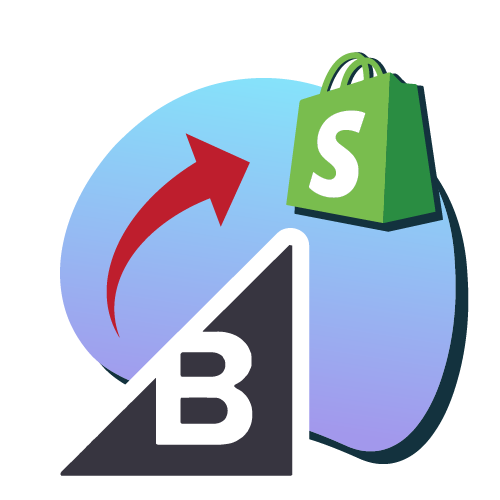Ever considered migrating to Shopify from another e-commerce platform and did not know how to? Then this guide will help you get an insight to the whole migration process. As a business grows and operates in an e-commerce platform, different functionalities and features offered by a certain platform at times may not be enough for the business to operate smoothly. Therefore migrating from your existing platform to another is crucial.
The process of migrating may take longer depending on the complexity and size of your website because everything like data, content and integrations will be transferred to the new e-commerce platform, and in this case–migrate to Shopify. However, having proper planning can limit potential issues that may come up.
Why Consider Migrating to Shopify?
1. Scalability
- It is easy to grow your business from startup to enterprise level with Shopify
2. Security
- Shopify guarantees the site security through regular security checks, maintenance and upgrades
3. User-friendly Interface
- Effortlessly manage your store with the intuitive dashboard of Shopify
4. Strong ecosystem of experts and solutions
- Shopify ecosystem consists of a vast community of multi-disciplinary experts that offers easy support and help
5. Easy customization from scratch
- Shopify offers you easy drag-and-drop functionality with the ability to make quick customizations (ex:for a flash sale) as well
6. Easy product management
- Shopify lets you manage your products with ease even if you are a beginner thanks to the platform offering product uploading, editing and managing stock all in one place
7. Mobile optimization
- Grab the attention of mobile users with customizable responsive designs that enhances user experience in any device
What should you consider before migrating?
Before you migrate to Shopify, consider checking the following:
- Get proper advice for your business from local experts regarding taxes and laws
- Make a list of the channel sales you want to use
- For anyone interested in selling in person, then learning Shopify’s point of sale hardware will be useful
- Decide which pricing plan suits you the best before migrating to Shopify
The Process of Migrating to Shopify
Below are the simplified steps to migrate to Shopify. If you are interested in an in-depth explanation, then reach out to our experts at Ecom Services.
1. Import your store content and data to Shopify
- Create your store on Shopify
- Decide on what data and content you need to transfer by revising the products and removing low performing content to give your business a fresh look
- Decide on a method to transfer data (ex: copying data from previous platform and pasting to Shopify platform, exporting data to CSV files and importing to Shopify)
2. Organize your products and verify them after importing and check for errors
- If import was successful, but there are changes in information, then make sure to check the Product Review section for the import summary, and you can make necessary changes by selecting View items.
- If the imported products are hidden, then you need to check and publish them to make it available to the sales channels.
- Check the product description on the product page, identify missing details, and complete them in the imported products.
- If the import of product variants becomes unsuccessful, then it is due to missing variant options; therefore, consider adding the product manually for a successful import.
- If some clients or orders were not imported, then that is due to having multiple customers with the same email address or phone number and only the most recent entry is added, therefore you have to manually add any old customer profiles.
3. Customize your website to your liking
- When you first create a store in Shopify, you are given a default theme
- Customize your theme to make it look how you want after migrating to Shopify
- If a different theme is needed, then add it through Shopify admin
4. Set up your shipping
- Make sure to accurately set up the shipping rates and methods before launching
- This will help you avoid the need for customer refunds due to overcharging or from requesting additional payment due to insufficient shipping charges.
5. Configure your taxes by charging taxes based on your shipping destinations and make sure to keep track of them
6. Set up your payment provider and customize your checkout
7. Test out by placing some test orders
- Check for the completion of a successful and failed transaction
- Check how you can cancel an order or request for a refund
- Check how you can fully carry out an order and how you partially do it
- Check how you can archive a successful order
8. Add staff to your online store
9. Domain setup
- Purchase a new domain through shopify and set up your shopify domain as your primary domain to make sure that it’s displayed to customers in their browser, in search results and on social media.
- Set up email forwarding so that the emails sent by customers to your custom domain will be forwarded to your personal domain
- Connect or transfer an existing domain to Shopify by setting up URL redirects in advance for pages that your customers may have bookmarked or for links from third-party sources so that they will be redirected to the new link without receiving an error message
Migrate to Shopify with the Shopify Experts of Ecom Services
Shopify experts of Ecom Services are ever ready to help any business owner that needs to migrate their online store from another e-commerce platform to Shopify. Our skilled team of experts will ensure to guide you through the step by step process about migrating to Shopify from another platform or even if you are migrating to Shopify from Shopify platform itself. If you need a much smoother and error-free migration experience with enhanced customizations then reach out to Ecom Services and hire an expert Shopify developer today!





